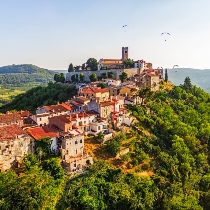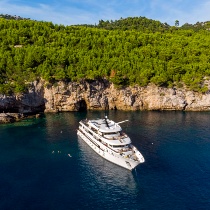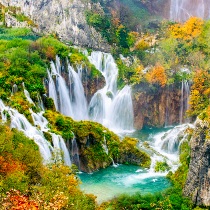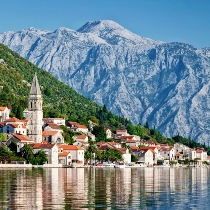UNESCO Heritage sites in Croatia

Historical Complex of Split with the Palace of Diocletian
The historical core of Split, including Diocletian’s Palace and part of the city enveloped by defensive walls, has been on the UNESCO World Heritage list since 1979. A must-visit on your Croatia holiday, it features some of the world’s most well-preserved Roman architecture. The palace was constructed over the late 3rd and early 4th centuries as the retirement residence for Roman Emperor Diocletian. Today, many of the historic buildings are home to everything from boutiques and galleries to wine bars, cafes, restaurants, and more. One of the highlights is the Cathedral of Saint Domnius in the heart of the palace. By climbing to the top of the 200-foot-high bell tower you’ll enjoy a magnificent view of the entire city of Split.
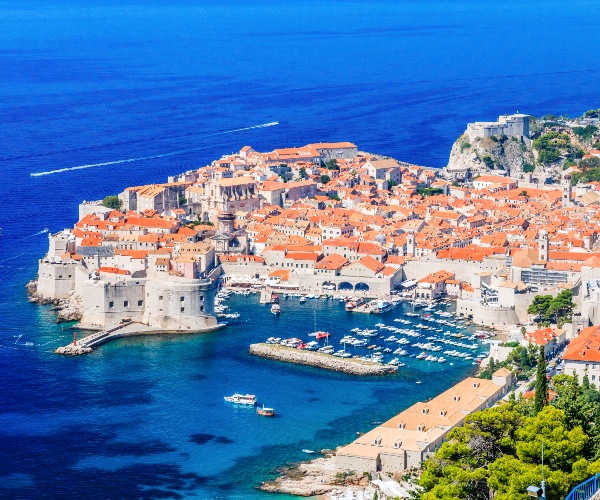
Old City of Dubrovnik
Dubrovnik‘s Old City is one of the most famous UNESCO sites in Croatia. It served as King’s Landing in the popular series “Game of Thrones,” revealing its beauty to many onscreen, but it was a favourite destination of many long before, attracting glamorous Hollywood stars like Richard Burton and Elizabeth Taylor. Impeccably preserved, the historical centre is encircled by massive medieval walls whilst the Stradun, a limestone-paved pedestrianised street runs through. With a romantic atmosphere and a diverse array of architectural styles from Baroque to Renaissance, it’s a joy to explore. Don’t miss a walk atop the stone walls for a view of the ‘Pearl of the Adriatic’ and the sea from above. It’s even more captivating at sunset.
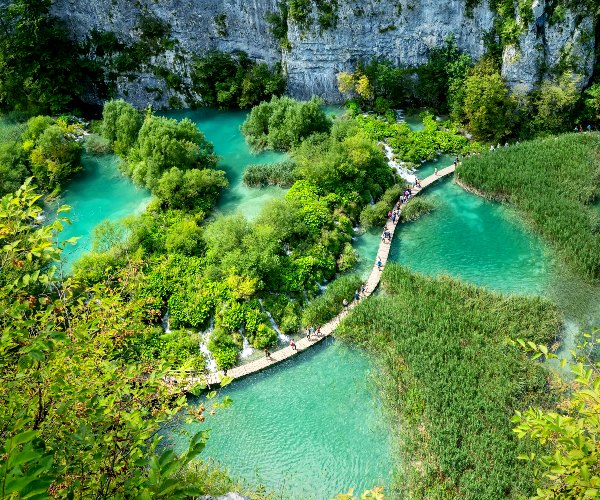
Plitvice Lakes National Park
The largest national park in Croatia at 115 square miles, Plitvice Lakes is renowned for its lakes in brilliant shades of emerald and turquoise. The park’s 16 lakes are interconnected by nearly countless waterfalls and surrounded by picturesque landscapes with forests and lush greenery that have made it another one of the most well-known UNESCO sites in Croatia. It’s also notable for its biodiversity, home to grey wolves, lynx, brown bears, and the European wild cat, whilst the meadows are rich in flora. There are eight designated walking routes, referred to as programmes” or “tours,” varying in length and distance. Scenic wooded paths and footbridges showcase views of the lakes and the cascades with clouds of colourful butterflies often flittering above.

Episcopal Complex of the Euphrasian Basilica in the Historic Centre of Porec
Seaside Porec, set along the coast of the Istrian Peninsula, is home to the group of religious monuments known as the Episcopal Complex of the Euphrasian Basilica. Located in the historic Old Town, it was originally built in the 4th century and expanded over the 5th and 6th centuries. The most complete surviving complex of its kind, the episcopal palace, basilica, baptistry, and atrium are fine examples of religious architecture. The 6th-century mosaics in the basilica are the crown jewel, depicting Christ, Mary and Child, and the Annunciation among others. Other notable features include the Canon’s House, added in the 13th century, a 16th-century belltower, a 15th-century sacristy, and chapels dating from the 17th and 19th centuries.

Historic City of Trogir
Medieval Trogir sits on a small island connected by a bridge to the mainland, less than 30 minutes from Split. Sometimes referred to as an open-air museum, its historic centre is surrounded by walls and has roots dating to the 3rd century BC when Doric Greeks founded a trading port at the site. Showcasing remarkably well-preserved Venetian architecture, it’s a joy to explore with a labyrinth of narrow stone streets, a grand 15th-century fortress/castle, and a wealth of impressive Romanesque, Gothic, Renaissance, and Baroque buildings. The imposing Cathedral of St. Lawrence, a Romanesque-Gothic triple-naved basilica, is particularly notable. Located on the main town square, it was built primarily in Romanesque style between 1200 AD and the early 17th century.
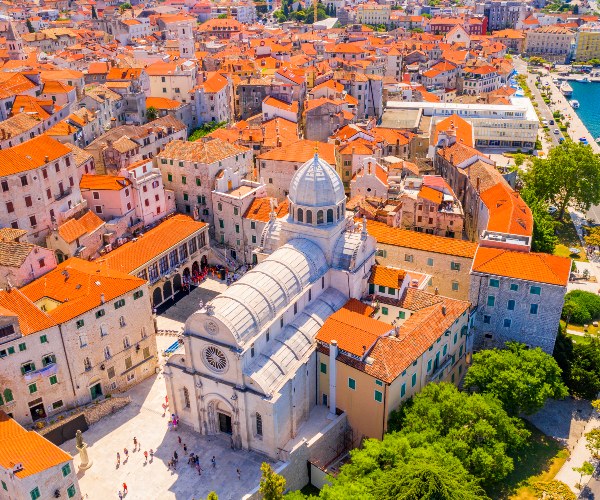
The Cathedral of St. James in Sibenik
Standing by the sea in a small square that was once the heart of ancient Sibenik, the Cathedral of St. James was built between 1431 and 1536. Constructed from marble and limestone from the island of Brac primarily in Renaissance style with Gothic elements, it adjoins the episcopal palace. Widely regarded as the finest building on the Dalmatian coast, its imposing Renaissance dome is an iconic symbol of Sibenik. It also stands out for its unique features like the frieze decorated with 71 sculptured faces of men, women, and children. Game of Thrones fans might recall it as it doubles as the House of Black and White where Arya Stark found refuge in Braavo, the city of the Iron Bank.

Ancient & Primeval Beech Forests
The Ancient & Primeval Beech Forests of the Carpathians and Other Regions of Europe are on the UNESCO List of World Heritage, spanning 10 European countries, including Ukraine, Spain, Slovenia, Romania, Italy, Bulgaria, Belgium, Austria, Albania, and Croatia. In Croatia, they can be found in the Paklenica and North Velebit national parks. The trees are recognized for their age, size, and other distinct features, representing exceptionally preserved, undisturbed forest ecosystems. They serve as an important habitat for many species, including some that are endangered, like the lynx, bear, wolf, stag and longhorn beetles, forest orchids, and holly. Explore them by hiking the park trails, such as those that lead to the highest peaks of Velebit Mountain in Paklenica.

Stari Grad Plain
Located on Hvar Island, one of the most popular islands to visit on a Croatia holiday, the Stari Grad Plain lies east of the town of Stari Grad, the oldest in the country, established by the Greeks in the 4th century BC. The farming techniques used over 2,400 years ago haven’t changed with the olive groves and vineyards remaining nearly completely intact since it was first colonised by the ancient Greeks. A unique example of geometric land division, it consists of rectangular plots divided by stone walls. The original construction also had a rainwater collection system that used cisterns and gutters. It was a sustainable farming method that benefited the entire community and ultimately inspired agricultural practices across Europe.

Stećci Medieval Tombstone Graveyards
The Stećci Medieval Tombstone Graveyards are mostly found in Bosnia & Hercegovina but they’re also located in the border regions of Montenegro, Serbia, and Croatia. Stećci tombstones date to the 12th century and were commonly used through the 16th century. Made of limestone, they can’t be found anywhere else but in this area, although similar tombstones were found in Ireland and Armenia. They were of significant importance to people during the Middle Ages, with inscriptions, symbols, and ornaments representing the region’s unique cultural heritage. There was also a local superstition that said the fields and crops would be destroyed if someone touched them. Their primary religious affiliation is still unknown, although they seemed to be common among both Orthodox and Catholic religions.

Venetian Works of Defence
The last of the UNESCO Sites in Croatia, the Venetian Works of Defence is made up of six components of defence works. Two are found in Croatia, Sibenik’s fortress of St. Nicholas and Zadar‘s defence system, whilst the others are in Italy and Montenegro, spanning over 620 miles between the eastern Adriatic Coast and Italy’s Lombard region. Regarded as quintessential examples of the ‘alla moderna’ fortification system, they demonstrate the influence of Renaissance-era Venice, with exceptional architectural, technological, and historical significance. Built in response to the increase in firearm warfare when cannons came to dominate battlefields, the bastion fort designs originated from the former Republic of Venice but quickly spread throughout Europe, remaining the standard for defence until the 19th century.
A Guide to the Medieval Hilltop Towns of Istria
Whilst the Istrian cities of Pula and Rovinj are well known amongst travellers, few venture inland to the region's beautiful landscape of rolling hills. Often compared with Tuscany, the Istrian countryside is characterised by its scenic hilltop villages, Italian in style, with sweeping vineyards and forests that are perfect for truffle hunting. One of the best places to go in Croatia for food, whilst here visitors can dine in family-run rural establishments and try locally produced wine. Read on for our favourite Istrian hilltop towns and villages to visit.Read MoreThe Best Cruises in Croatia
Embarking on a small ship cruise is one of the best and easiest ways to explore Croatia’s Dalmatian Coast. With different routes and cruising options available, you will be able to discover secluded bays, medieval cities, and vast national parks, all on the same holiday. We have rounded up the best cruises so that you can start planning your next trip to Croatia.Read MoreBest Cities in Croatia
From the cobblestone streets of Dubrovnik to the Austro-Hungarian architecture of Zagreb, Croatia has a wealth of fascinating cities that are culturally rich and historically significant. With attractions including historic forts, intriguing museums, well-preserved Roman sites, and vibrant culinary scenes, there is plenty to see and do whilst on a holiday in Croatia. Whilst it would be difficult to visit them all on one trip, here are the best cities in Croatia to experience on your next trip.Read MoreTop 5 National Parks in Croatia
Whilst Croatia is best known for its beautiful beaches and historic towns, there is a lot more that this versatile country has to offer.Read MoreThe 5 Best Luxury Croatia Cruise Ships
With an expansive coastline, Croatia is the perfect destination for small ship cruising, allowing travellers to enjoy a more intimate experience whilst sailing along the Adriatic Sea. Accessing places larger ships can’t quite reach, our Croatia small ship cruises can take guests to hidden gems in secluded locations whilst offering a personalised, attentive service. With plenty of time off the ship, travellers can immerse themselves fully in the destination, enjoying a wealth of excursions ranging from wine tasting to Jeep tours. With so many luxury vessels to choose from, it can sometimes be difficult to know where to begin. We have rounded up the best luxury Croatia cruise ships for you to start planning your next holiday.Read MoreBest Things To Do In Montenegro
Located at the southern end of the Dinaric Alps with Croatia its neighbour to the southwest, Montenegro is a stunning, diverse country with an enchanting coastline, soaring mountains, and sapphire lakes. It's easy to combine a visit with a Croatia holiday, enjoying opportunities for activities like hiking, mountain biking, kayaking, and more. There's rich history to explore too, from Roman villas with mosaic floors and walled medieval Old Towns to vibrantly painted monasteries, grand palaces, and castles. After exploring, mouthwatering cuisine is never far away, best enjoyed with a glass of Montenegrin wine. To make the most of your time in this beautiful country, be sure to put some of the best things to do in Montenegro on your itinerary.Read More
Copyright © 2024 Unforgettable Croatia. All rights reserved
